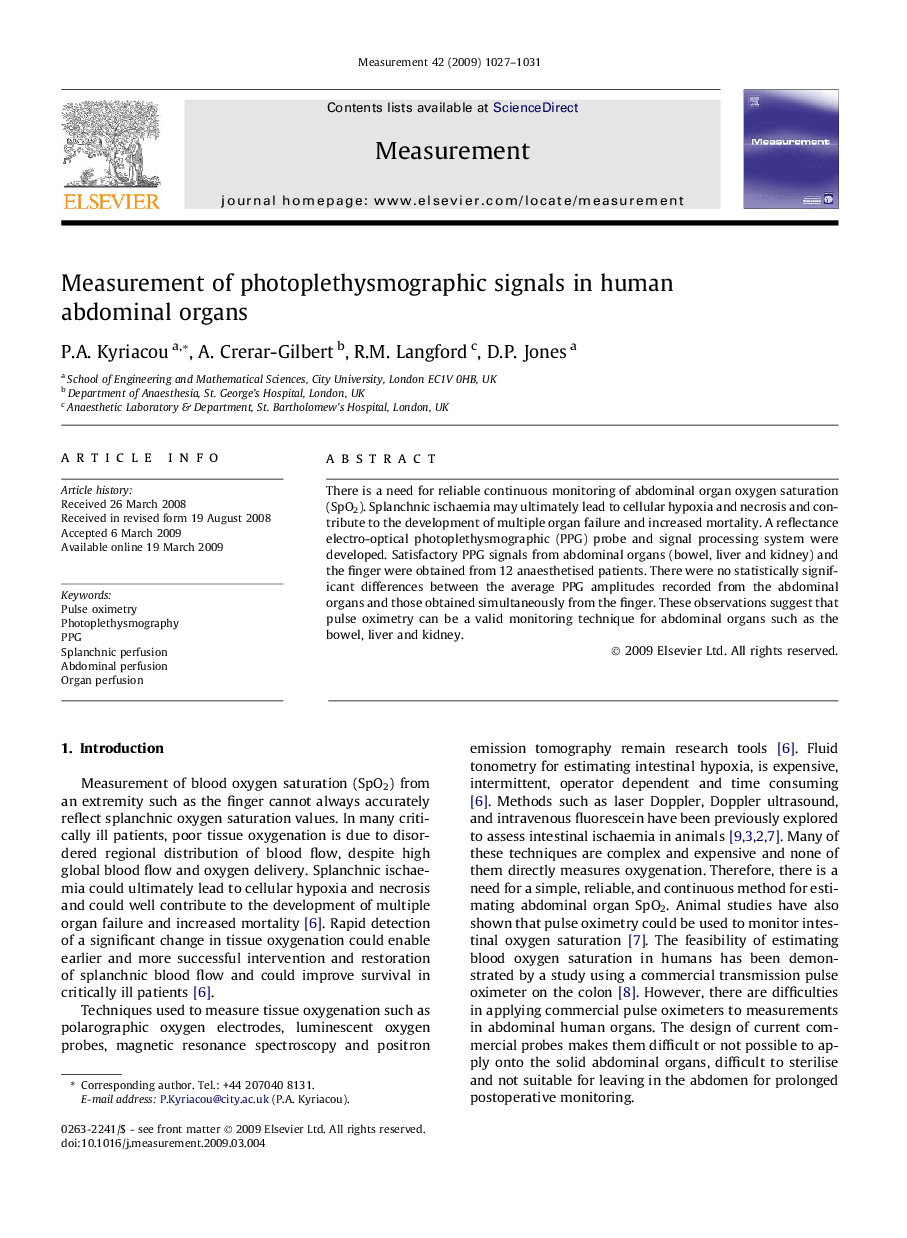| Article ID | Journal | Published Year | Pages | File Type |
|---|---|---|---|---|
| 727898 | Measurement | 2009 | 5 Pages |
There is a need for reliable continuous monitoring of abdominal organ oxygen saturation (SpO2). Splanchnic ischaemia may ultimately lead to cellular hypoxia and necrosis and contribute to the development of multiple organ failure and increased mortality. A reflectance electro-optical photoplethysmographic (PPG) probe and signal processing system were developed. Satisfactory PPG signals from abdominal organs (bowel, liver and kidney) and the finger were obtained from 12 anaesthetised patients. There were no statistically significant differences between the average PPG amplitudes recorded from the abdominal organs and those obtained simultaneously from the finger. These observations suggest that pulse oximetry can be a valid monitoring technique for abdominal organs such as the bowel, liver and kidney.
